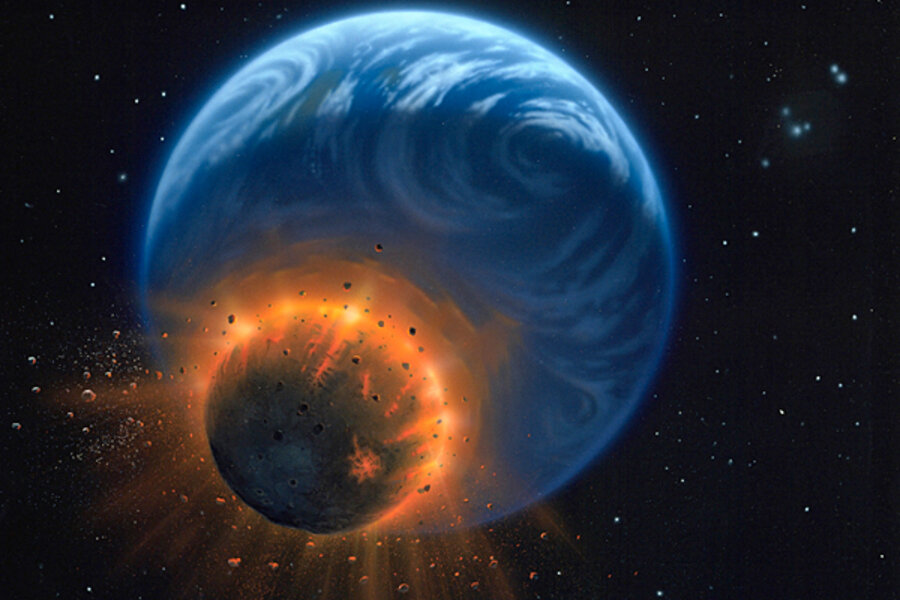Asteroid! Earth's largest digital camera scans for killer meteors
Loading...
A new telescope in Hawaii being billed as the world's largest digital camera has begun searching the sky for potentially killer asteroids that could endanger our planet Earth.
With a main mirror about 60 inches (1.8 meters) wide, the new telescope on Maui's Haleakala volcano peak is somewhat small when compared to the large 10-meter Keck telescopes atop the Hawaiian peak of Mauna Kea.
But the telescope's 1,400-megapixel camera is a digital giant, with 1.4 billion pixels spread across 40 centimeters to snap photos of the night sky automatically, night after night, to find potentially dangerous asteroids. A typical domestic digital camera may have 5 million pixels on a chip a few millimeters across, telescope officials said.
"Although modest in size, this telescope is on the cutting edge of technology," said astronomer Nick Kaiser, who is leading the asteroid hunt, known as the Panoramic Survey Telescope & Rapid Response System (Pan-STARRS). "It can image a patch of sky about 40 times the area of the full moon, much larger than any similar-sized telescope on Earth or in space."
The asteroid hunt actually began on May 13, when the new Pan-STARRS telescope PS1 started its space rock survey. That was when "the world became a slightly safer place," project officials said in a statement this week. [More asteroid photos.]
Now, the new telescope has been turned over to the PS1 Science Consortium, an international group of 10 institutions across the United States, Germany, Taiwan and the United Kingdom. The consortium includes the University of Hawaii at Manoa, which built the Pan-STARRS telescope.
The telescope is prototype for the more ambitious P4 observatory, a telescope that would be four times more powerful than P1 and sit atop Hawaii's Mauna Kea. As it is, P1 is expected to map about 75 percent of the night sky during its initial asteroid search.
Over the next three years, the new telescope is expected to find 100,000 asteroids and determine which, if any, pose a collision threat to Earth, researchers said. The observatory should also catalogue about five billion stars and 500 million galaxies, they added.
The new telescope is designed to take more than 500 photos of the sky every night and send 4 terabytes of data (the equivalent of 1,000 DVDs) to the Maui High Performance Computing Center for analysis. The computing center will compare the images with each other and older observations to find any objects that have moved or changed in brightness, Pan-STARRS researchers said.
Astronomers also hope to use the telescope to find brown dwarfs, distant quasars and powerful supernova explosions in distant galaxies.
Of the many asteroids that fly in the region of space around Earth, only about 85 percent of the largest ones have been found, according to a recent report from the National Academy of Sciences. About 15 percent of asteroids about 460 feet (140 meters) wide – which could cause widespread local devastation if they hit Earth – have been tracked, the report stated.
NASA routinely tracks asteroids and comets that fly near Earth using a network of ground and space telescopes as part of its Near-Earth Object Observations program, though the National Academy of Sciences report found that more funding is needed for the space agency to meet its asteroid threat census goals.
President Barack Obama has proposed a budget boost for NASA's asteroid-tracking program that would increase funding from $3.7 million in 2009 to $20.3 million in 2011. Obama has also proposed sending astronauts to visit an asteroid by 2025 to gather data that could help astronomers find ways to deflect space rocks before they threaten Earth and its inhabitants.





